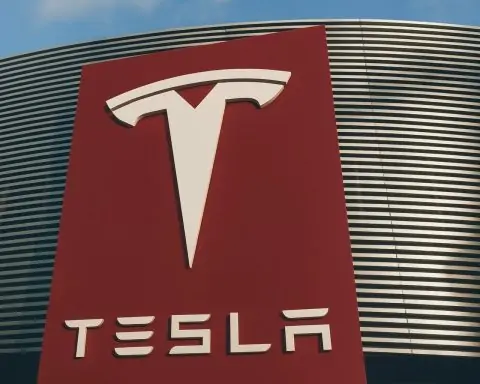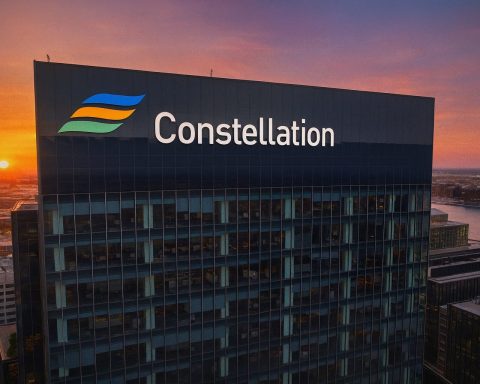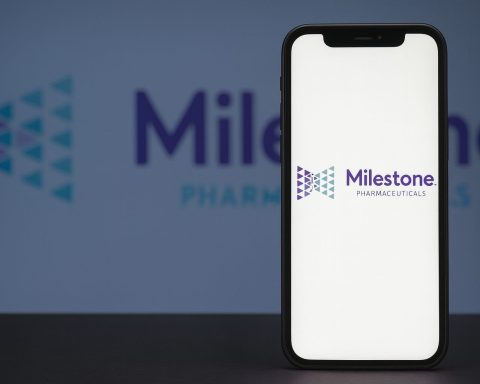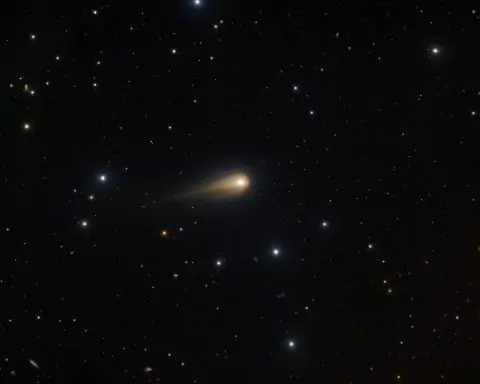- Samsung’s Galaxy Z Fold7, unveiled July 9, 2025, reached general availability on July 25, 2025, and stands 8.9 mm thick when folded with a 200 MP camera.
- Sony revived its RX1R line with the RX1R III, launched nine years after the last model and featuring a 61 MP full-frame sensor.
- AMD rolled out the Ryzen Threadripper Pro 9000 WX-series on July 23, 2025, led by the 9995WX with 96 Zen 5 cores and an $11,699 price tag.
- Seagate began shipping 30 TB hard disk drives using HAMR, the largest consumer HDDs on the market, at roughly $600 each.
- Kioxia announced the LC9 enterprise SSD with 245.7 TB capacity in a standard 2.5-inch form factor, built with 32 flash dies per chip.
- Japan unveiled a $550 billion investment package to bolster chip manufacturing in the US under a bilateral framework, with Taiwan’s TSMC already investing over $100 billion in Arizona fabs.
- Microsoft disclosed active attacks exploiting a previously unknown zero-day on on-premises SharePoint servers, patching them as thousands of servers were at risk and SharePoint Online remained unaffected.
- Dell confirmed a July cyberattack by World Leaks that exfiltrated about 1.3 TB of data across more than 416,000 files from an internal demo environment, with Dell saying no customer data was exposed.
- The Tea dating app disclosed a breach exposing about 72,000 private images, including roughly 13,000 selfies or government IDs, from an old legacy storage system.
- Allianz Life disclosed that hackers gained access to a third-party CRM on July 16, compromising data for the majority of its U.S. customers, potentially affecting about 1.4 million people.
The past two days brought a flood of tech developments worldwide – from breakthrough space missions and big hardware launches to serious cybersecurity incidents and pivotal policy shifts. (Notably absent are any AI-related headlines, by design.) Here are the major tech stories from July 26–27, 2025, organized by sector:
Consumer Electronics & Gadgets
- Samsung’s Foldable Flagship Hits Shelves: Samsung’s new Galaxy Z Fold7 foldable phone (unveiled July 9) reached general availability on July 25, pushing foldable design further [1] [2]. It’s Samsung’s thinnest, lightest Fold yet – just 8.9 mm thick when folded – and the first with a 200 MP camera [3] [4]. Early reviews praise the refinements; Engadget’s Sam Rutherford called it “foldable phone nirvana” albeit at a steep ~$2,000 price [5]. The Fold7 (along with a new Flip7) sets a high bar for foldable specs, though its cost and lack of features like an S-Pen keep it a niche luxury device.
- Sony’s Surprise Camera Comeback: In an unexpected move, Sony quietly revived its high-end RX1R compact camera line after nearly a decade. The new Sony RX1R III was launched out of the blue nine years after the last model, stunning photography enthusiasts [6]. The pocket-sized camera packs a modern 61 MP full-frame sensor and processor borrowed from Sony’s pro models, bringing major upgrades to the long-dormant series [7]. As Wired quipped about the long wait, “sorry you had to wait almost 10 years, RX1 fans, but better late than never” [8]. Photographers welcomed this retro revival, which shows Sony responding to the cult popularity of fixed-lens compacts like Leica’s Q series and Fuji’s X100 line.
Semiconductors & Hardware
- AMD Unleashes 96-Core PC Processor: PC chipmaker AMD rolled out its most powerful desktop CPU ever, launching the Ryzen Threadripper Pro 9000 WX-series on July 23. The flagship model packs a staggering 96 Zen 5 cores on a single chip and carries an eye-watering $11,699 price tag [9] [10]. Aimed at professional workstations, the 96-core Threadripper 9995WX easily outpaces Intel’s top-end chips in core count and multithreaded performance. OEMs like Dell and Lenovo began offering systems with the new chips, which AMD says deliver up to 2× faster rendering performance than the previous generation [11]. While few consumers will ever need 96 cores, the launch underscores AMD’s aggressive push at the ultra-high-end. (“The ultimate workstation processor just got even faster,” AMD touted in its announcement.)
- Record-Breaking Storage Capacity: The data storage industry hit new milestones in capacity. Seagate has started shipping 30 TB hard drives – the largest HDDs ever sold to the public – thanks to cutting-edge HAMR (heat-assisted magnetic recording) technology that crams about 3 TB per platter [12] [13]. Even more astonishing, flash memory maker Kioxia announced a gigantic 245.7 TB solid-state drive in a standard 2.5-inch form factor [14] [15]. The Kioxia “LC9” enterprise SSD stacks 32 flash dies per chip and is built for massive data workloads (think cloud data lakes and AI training clusters) [16] [17]. “KIOXIA has a long history of advancing flash storage, and the LC9 continues that legacy by setting a new benchmark for capacity and innovation in the SSD space,” said Kioxia executive Neville Ichhaporia [18]. Both breakthroughs illustrate how “bigger is better” in storage – Seagate’s laser-powered 30 TB drives are already on sale for ~$600 [19], and Kioxia’s 245 TB behemoth (now sampling to partners) can replace dozens of smaller drives in data centers, drastically improving density and efficiency.
- US–Japan Boost to Chip Manufacturing: In a win for semiconductor supply chains, Japan revealed that its new $550 billion investment package (part of a U.S. trade deal) could help finance a Taiwanese chipmaker’s expansion in America [20] [21]. Japan’s top trade negotiator Ryosei Akazawa said projects eligible for the funding “are not limited to U.S. or Japanese firms” – for example, “if a Taiwanese chipmaker builds a plant in the U.S. and uses Japanese components or tailors its products to meet Japanese needs, that’s fine too,” he noted [22]. The massive package, agreed in exchange for lower U.S. tariffs on Japanese goods, underscores U.S. and Japanese efforts to jointly bolster chip production. Industry watchers believe the most likely beneficiary is TSMC, the Taiwan titan already investing $100 billion+ in new fabs in Arizona [23]. With China’s shadow looming over Taiwan, both the U.S. and Japan are eager to diversify advanced chipmaking – and this deal’s financing could nudge critical TSMC manufacturing onshore, using Japanese tech along the way.
Cybersecurity & Data Privacy
- Microsoft SharePoint Zero-Day Exploited: A serious zero-day hack hit Microsoft’s widely used SharePoint server software this week, prompting urgent warnings to businesses and governments. Microsoft revealed “active attacks” targeting on-premises SharePoint servers (the self-hosted document-sharing platform), and rushed out patches that it urged admins to apply immediately [24] [25]. Unidentified attackers exploited a previously unknown vulnerability that allowed spoofing attacks on SharePoint, potentially letting hackers impersonate legitimate users [26] [27]. Tens of thousands of servers worldwide were at risk, officials said, though SharePoint Online (part of Microsoft’s cloud 365 service) was not affected [28] [29]. “We’ve been coordinating closely with CISA, DOD Cyber Defense Command and key partners globally throughout our response,” a Microsoft spokesperson said, emphasizing that fixes had been issued [30]. U.S. cybersecurity agencies and the FBI are investigating, and early reports suggest a state-backed Chinese group may have been involved in the espionage campaign [31] [32]. Security experts call it a textbook “zero-day scenario,” and it’s exactly the kind of incident that keeps IT managers up at night – an attack exploiting an unpatched hole in ubiquitous software.
- Dell Breach Exposes “Fake” Data: Computer maker Dell confirmed it suffered a cyberattack – but downplayed the impact, claiming the stolen files were largely dummy data. A new extortion group calling itself “World Leaks” breached one of Dell’s internal demo and testing environments in July [33] [34]. The hackers exfiltrated some 1.3 TB of data (over 416,000 files) including configuration scripts, system backups, and internal product materials, then leaked it online [35] [36]. However, Dell insists no sensitive customer or partner info was exposed. The demo platform was isolated from production networks and used only “synthetic (fake) data” and public test datasets for product showcases, the company said in a statement [37]. “Protecting the security and…trust of our customers and partners is a top priority,” a Dell spokesperson added, noting the company’s real networks remained secure [38]. Notably, the culprits didn’t deploy ransomware or encrypt Dell’s systems – instead, they focused purely on data theft and extortion. Security analysts say this reflects a broader trend, as ransomware defenses improve and attackers pivot to stealing data and blackmailing victims without ever scrambling files.
- Dating App’s Data Leak Hits 72,000 Images: A buzzy new social app called Tea – which lets women anonymously swap dating reviews on men – is reeling from a major privacy breach. Early on July 25, Tea’s team discovered unauthorized access to an old storage database, and by midday it emerged that roughly 72,000 private images from the app had been leaked onto the internet [39] [40]. The exposed cache is startling: about 13,000 of the images were user selfies or photos of government IDs used for account verification, and the rest included in-app posts, comments and private messages [41] [42]. The trove was even found dumped on the anonymous forum 4chan, according to investigative outlet 404 Media [43]. Tea’s spokesperson confirmed the breach and said it involved a “legacy data storage system” holding information from over two years ago [44]. The company says it immediately launched a full investigation, is working with third-party cybersecurity experts, and has no evidence that any current user data was affected [45] [46]. Still, the incident is raising alarms: Tea only launched this summer and surged to #1 on the U.S. App Store, meaning a trove of user content was suddenly exposed right as the app hit viral fame [47] [48]. It’s a stark reminder that even trendy new apps can harbor old security flaws – and that “anonymous” platforms aren’t risk-free if their backends aren’t locked down.
- Insurance Giant Hack – Millions Affected:Allianz Life, a major U.S. insurer, revealed that hackers stole personal data on the majority of its American customers in a breach earlier this month [49] [50]. In a filing with state regulators, Allianz Life (part of Germany’s Allianz) said a malicious actor gained access on July 16 to a third-party cloud-based customer relationship management (CRM) system used by its U.S. division [51]. The intruders obtained a wide range of personally identifiable information (PII) on Allianz’s clientele, financial advisors, and even some employees – in fact, “the majority of Allianz Life’s customers [and related individuals]” had data compromised, a company spokesperson told Reuters [52]. The breach was discovered on July 17 and is under investigation by the FBI. Allianz says there’s no evidence its core networks or policy systems were accessed, and that it’s notifying affected customers and shoring up security [53]. Cybersecurity experts note that this incident, reportedly first uncovered by TechCrunch, shows how even highly regulated financial firms remain vulnerable via third-party platforms. With 1.4 million U.S. customers now potentially impacted [54], Allianz Life faces tough questions about its vendor security and could see regulatory fallout in the wake of one of 2025’s largest data heists.
Telecommunications & Infrastructure
- Phone-to-Satellite Messaging Becomes Reality: A long-hyped telecom breakthrough is here – texting via satellites on ordinary cell phones. T-Mobile US and SpaceX officially launched their satellite-to-cell service (dubbed “T-Satellite”) after months of beta tests, aiming to eliminate mobile dead zones. As of July 23, T-Mobile customers can connect to SpaceX’s orbiting Starlink satellites to send and receive basic text messages, even far outside any cell tower coverage [55] [56]. Remarkably, no special “satellite phone” is needed – the system works with existing phones (over 600 models, including recent iPhones) via new network integration [57] [58]. Initially the service supports SMS and iMessage texting (no voice or data yet) and is included for free on T-Mobile’s top plans (or ~$10/month for others) [59] [60]. Even subscribers on rival carriers like AT&T or Verizon can use it by subscribing to T-Mobile’s plan as an add-on. There are caveats: you must be outdoors with a clear sky, and messages may take up to a few minutes to send. But this “direct-to-cell” satellite connectivity is a first-of-its-kind offering – an idea that once seemed science fiction now becoming reality. “We’re bringing connectivity to places it’s never existed,” T-Mobile said, describing eventual plans to add satellite voice and data service by 2026 [61] [62]. With over 650 Starlink satellites now serving T-Mobile users, the era of ubiquitous coverage is a step closer, starting with text messaging from literally anywhere.
- US Regulator Scales Back Broadband Goals: In a controversial policy U-turn, the U.S. Federal Communications Commission (FCC) moved to drop the national 1 Gbps/500 Mbps broadband speed target that it set just last year [63] [64]. The gigabit-speed goal – meant to spur fiber optic rollout – is now deemed “unrealistic and unfair” to internet providers using technologies like satellite or fixed wireless that can’t hit those speeds, according to an FCC draft notice [65]. “Assuming a long-term goal of 1000×500 Mbps may be unreasonably prejudicial…[it] risks… picking winners and losers,” the FCC wrote, arguing for a more “technologically neutral” benchmark [66] [67]. The agency (newly led by a more deregulatory majority) also wants to stop factoring broadband affordability and adoption rates into its annual evaluations [68]. Consumer advocates blasted the proposals, warning they could remove pressure on ISPs to improve service and leave rural areas stuck with sub-par speeds [69] [70]. But FCC leaders like Brendan Carr defend the change, saying it simply aligns policy with reality and focuses on infrastructure over social factors. The commission is set to vote on the rollback August 7, and a firestorm of debate is already underway over how it might widen the digital divide or, conversely, free providers from impractical mandates.
Space & Aerospace
- NASA Launches “Space Weather” Satellites: NASA notched a big success with the July 24 launch of TRACERS, a pair of scientific satellites that will study Earth’s magnetic shield like never before. A SpaceX Falcon 9 rocket blasted off from California carrying the twin TRACERS spacecraft, which will fly in tandem through Earth’s magnetic field to observe how the Sun’s eruptions interact with our planet [71]. Over a one-year mission, the satellites will dart just 10 seconds apart through Earth’s magnetic cusp region, capturing 3,000+ measurements of plasma and geomagnetic activity. The goal is to unravel the process of magnetic reconnection – essentially how solar wind particles crash into our magnetosphere and unleash energy, sometimes disrupting GPS, power grids, and satellites [72]. “The TRACERS satellites will move us forward in decoding space weather and further our understanding of the connection between Earth and the Sun,” said acting NASA Administrator Sean Duffy, hailing the mission as a boon to both science and satellite safety [73]. Along for the ride were three small tech-demo satellites, all successfully deployed. TRACERS’ launch comes as solar activity ramps up toward a peak, so scientists are eager to get new data on how solar storms affect Earth – knowledge that could help protect critical infrastructure.
- Europe’s Climate-Mapping Rocket Launch: Across the Atlantic, Europe celebrated its own orbital success on July 25. An Arianespace Vega-C rocket lifted off from French Guiana carrying five Earth-observing satellites into orbit [74]. Among them was MicroCarb, a 180 kg French satellite designed to map global carbon dioxide sources and sinks with unprecedented precision (to within 1 ppm of CO₂) [75]. Riding alongside were four CO3D satellites built by Airbus, which will work together to produce high-resolution 3D maps of Earth’s terrain [76]. Each CO3D satellite carries a novel optical sensor to capture 50 cm-resolution imagery for detailed topographic models after processing [77]. The mission (Vega flight VV27) marked a comeback for Vega-C after a launch failure last year – and it went flawlessly, deploying all five satellites into their planned orbits [78]. The success is a relief for Europe’s space program and a boost for climate researchers awaiting the new CO₂ data. With Europe’s heavy Ariane 5 rocket recently retired, pressure is on smaller launchers like Vega-C to deliver – and this mission showed Vega is back on track.
- Amazon’s Big Bet on Satellite Internet: In the private sector, Amazon is racing to catch SpaceX’s Starlink in the satellite broadband arena – and it just opened its wallet in a big way. The e-commerce giant confirmed a $139.5 million investment to build a state-of-the-art satellite processing facility at NASA’s Kennedy Space Center in Florida [79]. The 100,000 sq ft facility will be dedicated to Amazon’s ambitious Project Kuiper, a planned megaconstellation of 3,236 internet satellites intended to compete with Starlink. The site will enable Amazon to integrate and fuel over 100 Kuiper satellites per month, supporting a rapid launch cadence across multiple rocket providers [80] [81]. With Kuiper’s first prototype satellites launched late last year and half the constellation required in orbit by 2026 to meet FCC deadlines, Amazon is under the gun to deploy hardware fast [82]. Building its own payload processing facility on the Space Coast – rather than relying on congested shared facilities – should speed things up and avoid bottlenecks [83]. It also signals Amazon’s serious commitment (and deep pockets) to challenge SpaceX’s head start in space-based internet. The new facility will create hundreds of jobs in Florida and further cement the Space Coast as a launch hub. Amazon has launch contracts lined up with ULA, Blue Origin and even SpaceX itself – so if all goes to plan, we’ll soon see a flurry of Kuiper satellites heading skyward to join the broadband space race.
- Global Space Alliances Strengthen: Amid the technological leaps, space policy and partnerships are evolving rapidly. The U.S. Space Force this week released its first-ever International Partnership Strategy, outlining a vision for deeper collaboration with allies in military and commercial space endeavors [84]. Emphasizing that “spacepower is the ultimate team sport,” the strategy calls for treating allied nations as “combat multipliers,” greater intelligence-sharing, and integrating partner countries into everything from satellite design to joint orbital operations [85]. In the same spirit, aerospace firm Collins Aerospace announced a major expansion of its R&D facilities in Texas (with state support) to advance defense and space technology [86]. And in a sign of growing regional cooperation, Turkey’s space agency marked one year since launching its first domestically built comms satellite by partnering with Azerbaijan to co-develop a new satellite – a move aimed at boosting local space industry talent [87]. All these developments point to a globalizing space sector where countries big and small are teaming up to push the frontiers of technology and exploration. As more players enter the space arena, international partnerships are becoming key to achieving ambitious goals – from defending critical space infrastructure to landing the next humans on the Moon and beyond.
Sources: Connected press releases, government statements, and reputable media reports were used in compiling this roundup. Key references include Reuters [88] [89], NASA [90], Business Insider [91], Wired [92], Engadget [93], and others as cited above. Each link 【】 points to the original source for more details.
References
1. ts2.tech, 2. news.samsung.com, 3. ts2.tech, 4. news.samsung.com, 5. www.techspot.com, 6. ts2.tech, 7. ts2.tech, 8. www.wired.com, 9. ts2.tech, 10. www.theverge.com, 11. www.amd.com, 12. ts2.tech, 13. www.tomshardware.com, 14. ts2.tech, 15. americas.kioxia.com, 16. ts2.tech, 17. americas.kioxia.com, 18. americas.kioxia.com, 19. arstechnica.com, 20. www.reuters.com, 21. www.reuters.com, 22. www.reuters.com, 23. www.reuters.com, 24. www.reuters.com, 25. www.reuters.com, 26. www.reuters.com, 27. www.reuters.com, 28. www.reuters.com, 29. www.reuters.com, 30. www.reuters.com, 31. www.reuters.com, 32. www.reuters.com, 33. ts2.tech, 34. www.esecurityplanet.com, 35. ts2.tech, 36. www.esecurityplanet.com, 37. www.esecurityplanet.com, 38. www.esecurityplanet.com, 39. ts2.tech, 40. www.businessinsider.com, 41. ts2.tech, 42. www.businessinsider.com, 43. ts2.tech, 44. www.businessinsider.com, 45. www.businessinsider.com, 46. www.businessinsider.com, 47. ts2.tech, 48. www.businessinsider.com, 49. www.reuters.com, 50. www.reuters.com, 51. www.reuters.com, 52. www.reuters.com, 53. www.reuters.com, 54. www.reuters.com, 55. ts2.tech, 56. ts2.tech, 57. ts2.tech, 58. ts2.tech, 59. ts2.tech, 60. www.reuters.com, 61. www.reuters.com, 62. www.reuters.com, 63. ts2.tech, 64. ts2.tech, 65. ts2.tech, 66. ts2.tech, 67. ts2.tech, 68. ts2.tech, 69. ts2.tech, 70. ts2.tech, 71. ts2.tech, 72. ts2.tech, 73. ts2.tech, 74. ts2.tech, 75. ts2.tech, 76. ts2.tech, 77. ts2.tech, 78. ts2.tech, 79. ts2.tech, 80. ts2.tech, 81. ts2.tech, 82. ts2.tech, 83. ts2.tech, 84. ts2.tech, 85. ts2.tech, 86. ts2.tech, 87. ts2.tech, 88. www.reuters.com, 89. www.reuters.com, 90. ts2.tech, 91. www.businessinsider.com, 92. www.wired.com, 93. www.techspot.com










